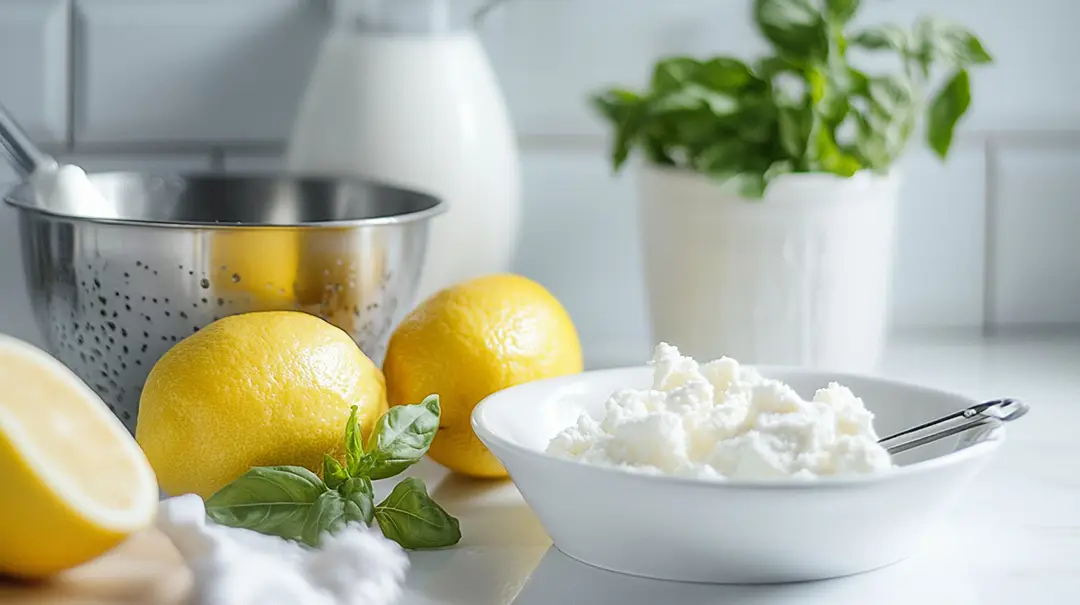
Making cheese at home is a rewarding journey where you control ingredients and flavours, leading to healthier and customised results. With just milk and lemon juice, you can create delicious farmer's cheese from scratch, offering a fun and accessible hobby for all cheese lovers.
Making cheese at home is a gratifying culinary journey that offers numerous benefits and joys. Homemade cheese allows you to control the ingredients, avoiding preservatives and additives commonly found in store-bought varieties. This process not only results in healthier cheese but also provides a unique opportunity to tailor flavours and textures to your liking. The satisfaction of transforming milk into delicious cheese using just a few basic ingredients, such as lemon juice, is unparalleled, making it an accessible and enjoyable hobby for beginners and enthusiasts alike.
To make simple farmer’s cheese at home, you will need just a few basic ingredients and tools:

One common issue when making fresh cheese is that the curd doesn’t form correctly. This can often be due to the temperature of your milk. Ensure the milk is warmed to the specified temperature in your recipe, as using milk that is too cold or too hot can prevent curds from forming. Additionally, check the freshness and activity of your rennet. If the rennet is old or stored incorrectly, it may not work effectively. Using pasteurised or ultra-pasteurised milk can also impact curd formation negatively, so opt for raw or minimally processed milk if possible.
If your curds are too soft, it might be that the milk was not left to set long enough after adding the rennet. Make sure to follow the suggested times in your recipe and avoid disturbing the milk during this setting period. On the other hand, if your curds are excessively hard, it could indicate that you’ve overcooked the curds or stirred them too vigorously. Gentle stirring and careful monitoring of the temperature can help you achieve the right consistency.
A bitter taste can sometimes develop if the curds were left in the whey for too long after cutting. Drain the whey promptly once the curds reach the desired firmness. Another cause might be the type or amount of rennet used. Check that you are using the correct type and quantity as specified by your recipe. Additionally, if you are ageing the cheese, ensure that it is done in the proper conditions and that any bacteria cultures added are fresh and suitable for the type of cheese you are making.
Texture issues such as graininess can occur if the curds have been handled too roughly or reheated unevenly. When cutting and stirring the curds, do so gently to maintain their integrity. Ensure even heating if your recipe calls for gradually increasing the temperature, and avoid sudden temperature spikes. The milk quality and type can also affect texture; using fresher milk and avoiding ultra-pasteurised milk can produce better results.
Add Fresh Herbs
One of the simplest methods to enhance your fresh cheese is by adding fresh herbs. Herbs like chives, parsley, thyme, or basil can be finely chopped and mixed into the cheese. This not only boosts the flavour but also adds a pop of colour. Experimenting with different combinations can help you discover a blend that suits your personal taste.
Spices and Seasonings
Incorporating spices and seasonings is another way to elevate the flavour profile of your homemade cheese. Black pepper, paprika, and garlic powder are popular choices. You could even try a pinch of nutmeg or some crushed red pepper flakes for a bit of heat. These spices can be mixed in during the final stages of the cheese-making process.
Infuse with Aromatics
For those looking to create a more complex flavour, try infusing the cheese with aromatics. Crushed garlic, truffle oil, or lemon zest can add depth and sophistication. Simply mix these aromatic ingredients into the cheese before allowing it to set fully. This technique provides a nuanced flavour that can make your cheese stand out.
Crafting cheese at home offers numerous advantages beyond taste and quality. It’s a cost-effective hobby that can yield greater quantities per batch compared to store-bought options. The process fosters a deeper connection to food sources, encouraging the use of high-quality, local milk. Additionally, homemade cheese is free from artificial flavours, preservatives, and colours commonly found in commercial varieties, allowing for complete control over ingredients. This culinary skill also serves as an educational experience, providing insights into food science and traditional techniques, making it an excellent family activity that children particularly enjoy.
The straightforward list of ingredients and equipment makes homemade cheesemaking accessible to beginners and experienced cooks alike. The process requires minimal specialised tools, with most items likely already available in a typical kitchen.
The advantages of making cheese at home go well beyond the delicious end result, providing a rewarding and educational experience that delights both the mind and the palate.

At Med.kitchen, our passion lies in crafting exceptional culinary experiences through our online platform. We specialise in sharing a wealth of knowledge via articles, recipes, courses, and online mentoring, aiming to inspire both novice and seasoned chefs alike. Our focus has shifted from private dining to being an online source of gastronomic inspiration, allowing you to explore and refine your culinary skills from the comfort of your home..